Natural Turf Golf Greens - Are they on their way out?
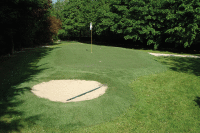
The life of a sports turf agronomist is often challenging, usually varied and always interesting. When I started working for myself as an independent consultant in August 2005, I had thought that the majority of my work would be in golf. This turned out not to be the case and it was, in fact, football and winter games, in particular the carrying out of feasibility studies and the preparation of specifications for new pitch constructions, that provided most of my income during those early years.
Since then, there has been a certain amount of ebb and flow among the various types of work undertaken and, as I write this, almost ten years later, there appears to be a rise in the amount of golf work we are doing, whilst winter games, on natural turf at least, may be diminishing.
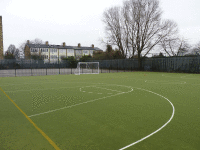
This is not to say that improvements in natural turf technology have not taken place. They most certainly have, and especially for winter games pitches. In fact, faced with the prospect of annihilation by the march of the AGPs, there seems to have been an acceleration in the development of a wide range of technologies applicable to natural turf sports pitches. This may possibly have reached its pinnacle with the so called 'hybrid' pitches, such as Desso GrassMaster, which combine natural and artificial grass, but many more innovations have been and continue to be developed.
In the words of the song, we've rolled with these changing trends over time because that is what consultants have to do. Having visited a growing number of golf courses again recently, however, it occurs to me that golf, as an industry, does not appear to have undergone a parallel existential journey as winter games. Golf greens, in particular, appear to me now to be in more or less a similar general condition, and suffer the same problems as those I was examining twenty or more years ago.
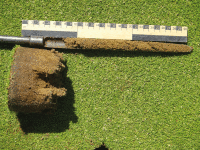
However, many quite basic problems persist. Fusarium and anthracnose remain frequent visitors to golf greens while other pests, notably nematodes, have undoubtedly increased. This is despite many advances in pesticide technology, perhaps most significantly the development of longer-lasting preventative fungicides. These particular biological arms races seem set to continue for many years to come.
More fundamental still, developments related to soil structure, texture, drainage and water relations appear, like many of the greens I have examined recently, to have stagnated.
It was my observation some years ago that golf, as an industry, has been pre-occupied with what I now see as a wasteful debate over the relative abundance of annual meadow grass among green swards. Various theories, many of them nonsense, have been bandied about on this, tying unfortunate greenkeepers in knots as they wrestle with the various demands and expectations these ideas have laid down.
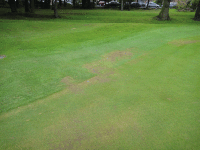
And the golfers have carried on golfing oblivious to the anxieties taking place in the shed. To satisfy their concerns, technological developments in golf have focused instead on the measurement of playing quality as experienced by the golfers, in particular green speed and trueness.
In this respect, I have made my own contribution with the patented invention of the 'Lodgemeter' or Golf Green Smoothness Meter1. But, being able to measure something does not provide the means of bringing about its improvement, and it is here that I think golf, and perhaps golf course agronomists also, have been left behind somewhat by other sports.
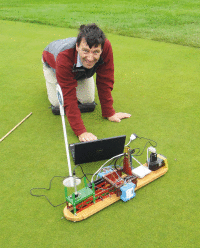
Ironically, an answer to most of golf's greenkeeping issues has been available for over a quarter of a century. This is, of course, the USGA method of golf green construction. Properly installed and maintained, greens constructed in this manner are able to deliver all of the playing quality advantages demanded by golfers, while the many difficulties that beset greenkeepers working on 'clay-bowl', 'natural soil' or 'push-up' greens are immediately eliminated.
Certainly, over the years, I have seen many USGA greens that have been less than satisfactory, and this may be the actual experience of some readers. As a consequence, many may have become disillusioned with this particular technology. But, in my experience and in each and every situation, there have always been identifiable reasons why this was the case.
It is, therefore, the failure to embrace fully what should be a fairly uniform approach to golf green construction and maintenance that I believe has held the industry back. Indeed, it is largely because this form of green construction has not been sufficiently widely accepted, in Britain at least, that improvements in the technology, derived from actual experience, have not been achieved.
If you think maintaining the 'character' of a green is putting up with persistent annual waterlogging or regular outbreaks of dry patch, anthracnose or fusarium, then that's fine, but I would not consider this a particularly enlightened or forward-thinking view. I would argue that consistency is a good thing with regard to the performance of a golf green, and that the diversity that golfers tend to seek comes in the form and character of the course as a whole and not in relation to the actual greens. I also expect many golfers, if not all greenkeepers, would agree with this.
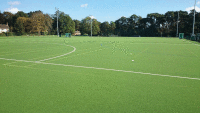
There are now numerous golf courses on which entirely artificial greens have been established, and very many golf practice facilities are based on artificial turf. The knowledge and understanding surrounding this technology is such that the experiences of golfers and the behaviour of golf balls will soon replicate, if they do not already, exactly those that may be achieved on the best-performing natural turf greens.
It may be only a matter of time, therefore, before these surfaces become accepted and ultimately demanded by golfers, irrespective of what the sporting bodies or the greenkeepers or the agronomists might prefer. Where then would be the debate over pure fescue greens, use of phosphates or 'displacement theory'? "My name is Ozymandias, King of Kings; Look on my works, ye mighty, and despair!"*
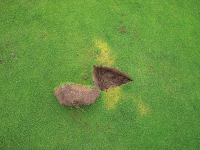
If even half of the amount of discussion that has taken place, much of it in these pages, over the last ten years and concerning, for example, the control of annual meadow grass or the environmental advantages of minimising fertiliser and water use on greens, had been devoted instead to the construction and maintenance of USGA or generally sand-based greens, I am sure that the overall standard of British golf greens would, by now, be much better than it is at present.
*The central theme of Percy Bysshe Shelley's poem Ozymandias is contrasting the inevitable decline of all leaders and of the empires they build with their pretensions to greatness.
1Patent Number GB2442787, Golf Green Roughness Meter. Disclosed 22 October 2005, granted 9 June 2010



